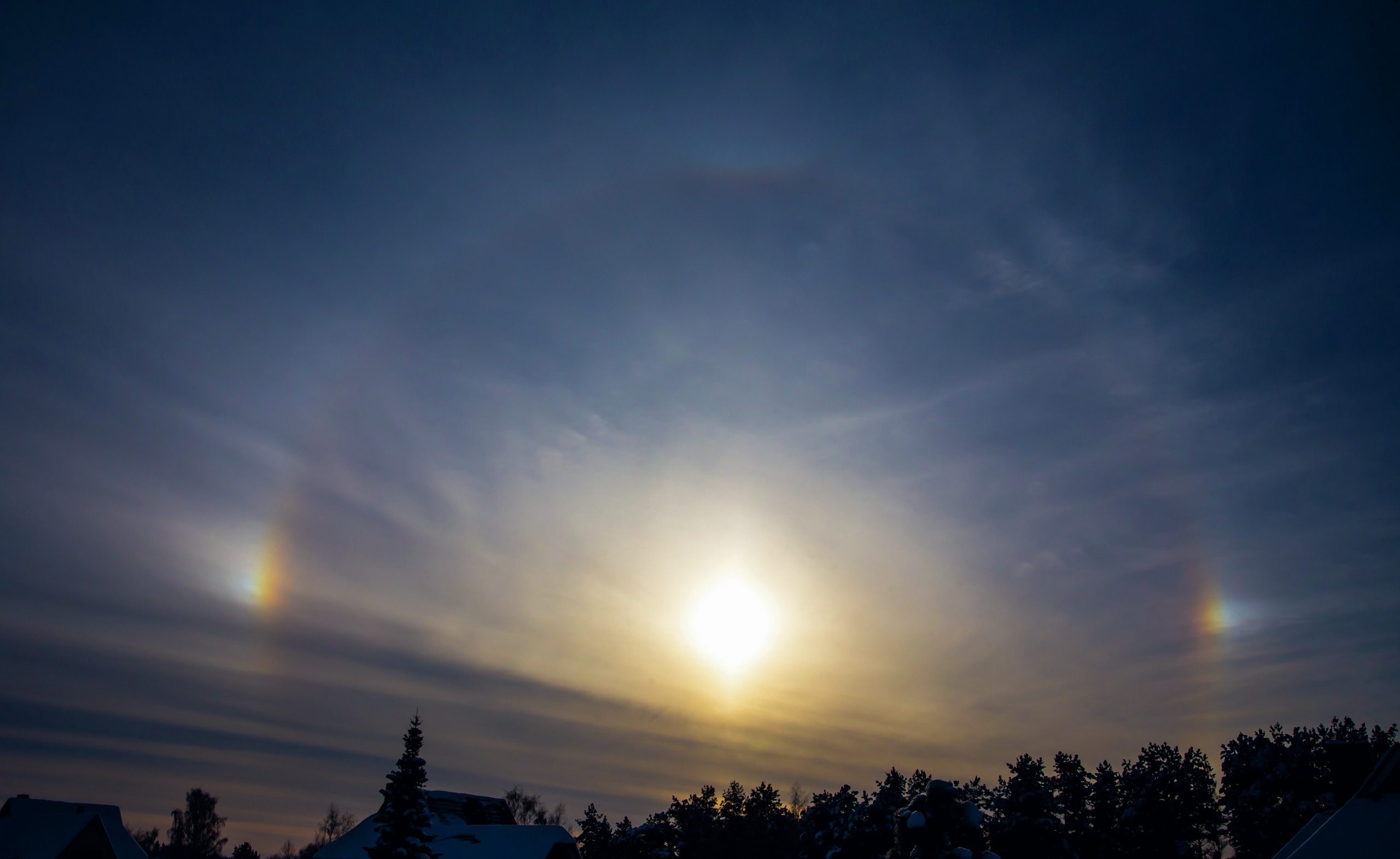
On very cold, clear days bright patches of light, known as sun dogs or parhelia (‘false suns’), can sometimes be seen near the Sun (Figure 1). They are produced when sunlight passes through small hexagonal ice crystals in the atmosphere. The crystals are prisms that refract sunlight through an angle of about 22°, with different colours emerging in slightly different directions (Figure 2). The crystals tend to align with their hexagonal symmetry axes vertical, so an observer sees bright patches of light on either side of the Sun (Figure 3).
Several items in this issue of Physics Review feature light and other types of electromagnetic radiation. On pages 8–11 Kevin Mosedale explains another atmospheric ‘trick of the light’—the elusive green flash sometimes seen at sunset. Peter Main takes a look at the spectacular, first-ever image of a black hole, obtained using radio observations, and explains its significance in relation to the theory of general relativity (pp. 2–6). Then, on pages 16–17, At a glance takes a look at some intriguing properties of glass.
Your organisation does not have access to this article.
Sign up today to give your students the edge they need to achieve their best grades with subject expertise
Subscribe




